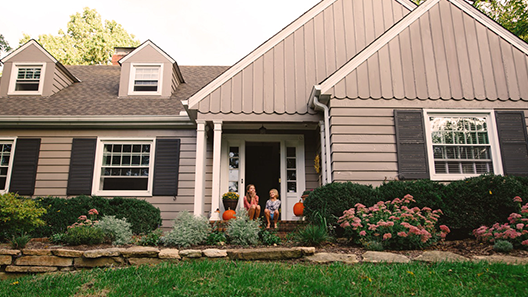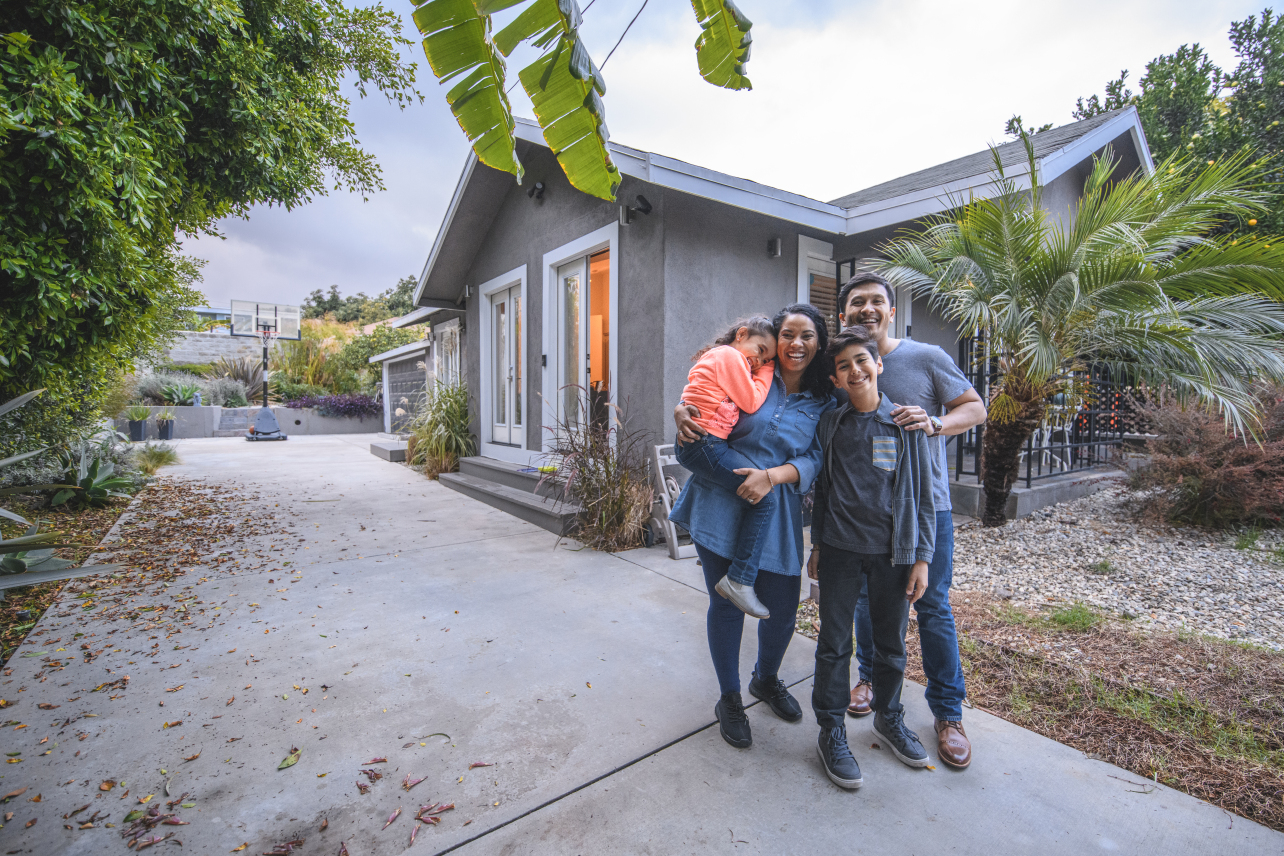For many people, purchasing a home is the most significant financial investment they'll ever make. A standard 30-year mortgage can involve making 360 monthly payments to your lender. That’s a substantial long-term commitment! With that in mind, it’s important to understand what goes into your monthly mortgage payment and explore options that could help you save money or shorten your loan term, if your financial situation allows.

Click to navigate:
What Is a Mortgage?
What Makes Up My Mortgage Payment?
How Does My Escrow Account Work?
What Is Amortization?
When Do Payments Start After Closing?
How Do I Make Payments?
How Do I Build Equity?
How Do I Pay Off My Mortgage?
Need More Info?
When buying a home, your mortgage agreement is the long-term legally binding contract you’ve entered into with your lender. Your lender is loaning you the money to buy the home, and you’re agreeing to pay back your lender via regular payments (typically monthly).
You’re not only paying for the cost of the home (otherwise known as the principal), but you’re also paying interest to your lender for lending you the money. Your mortgage payment likely also includes funds held by the lender to pay property taxes, insurance and other fees.
What Makes Up My Mortgage Payment?
The four main parts of a mortgage payment are principal, interest, taxes and insurance (PITI). Principal and interest make up most of your payment (P&I). As we explain the parts of a mortgage payment, we’ll use a $400,000 mortgage as an example.
Principal:
The amount you borrowed to buy your house. This part of your monthly payment goes to pay down your loan balance. In our example, the principal (before any payments are made) is $400,000.
When you start making mortgage payments, the portion of your payment that goes toward principal is quite small, but over your loan term (the length of time you’re paying off your loan), the portion increases. We’ll go into more detail about this in the “What is Amortization” section of this article.
Interest:
The percentage of the principal amount you pay to your lender. Interest is the fee your lender charges for lending you money.
When you begin making mortgage payments, the portion of each payment that goes toward interest starts high but decreases over your loan term. This is true for a fixed-rate mortgage, where the interest rate stays the same during your loan term. However, for an adjustable-rate mortgage (ARM), your lender may adjust your interest rate periodically based on current industry indexes, which will change your payment.
A higher interest rate results in a higher overall payment. In our example, if the rate on your $400,000 mortgage is 6.625%, your P&I payment will be $2,561. At 8%, that $400,000 mortgage results in a $2,935 P&I payment.
Tax:
Property taxes are part of being a homeowner, though they vary depending on where you live. Your local municipality uses this money to fund public services like schools, police and the fire department. Taxes are usually a percentage of your property’s assessed value, thus if your home’s value increases, so will your tax bill.
If your mortgage has an escrow account (which most mortgages do), each month we’ll include one-twelfth of your expected annual property tax to your mortgage payment. When taxes are due, we’ll pay them from your escrow account. Your first years’ worth of property taxes may have been included in your closing costs. For more information on how your escrow account works, read the “Tell Me More About My Escrow Account” section of this article below, or go here for a more in-depth explanation.
Insurance:
Most lenders require you to carry homeowner’s insurance to cover property loss or damage from fire, theft or certain other circumstances. You may have paid the first year’s worth of insurance as part of your closing costs.
If your mortgage carries an escrow account, the cost of your insurance will also be included with your mortgage payment each month, as we do for property taxes. When your insurance bill is due, we’ll pay it from your escrow account. Learn more about taxes and insurance on our Escrow Hub.
Private Mortgage Insurance (PMI):
This may or may not be included in your mortgage payment – it typically depends how much you put down when you closed on your home. Most often, PMI is required if you put down less than 20% of your loan’s principal amount. PMI protects your lender if you default on your loan and they’re forced to foreclose on your home.
In some cases, you may have paid PMI as a single upfront payment at closing, or it might be included with your monthly mortgage payment. Sometimes your mortgage includes lender-paid PMI, for which you pay a slightly higher interest rate on your mortgage, rather than a fee.
If you do pay PMI, you might be able to cancel it before the end of your loan term, depending on your mortgage agreement and how much you’ve paid down on your loan. Review your mortgage agreement for details, and read this article to learn more about PMI.
How Does My Escrow Account Work?
You may or may not have an escrow account associated with your mortgage. If you paid less than 20% down on your home at closing, it’s likely you have one.
Your escrow account is where your lender holds money that can be used to pay your property taxes and your insurance bill (T&I), and may also include private mortgage insurance (PMI). If you have an escrow account, you are contributing to it each month via your mortgage payment. Once property taxes and insurance payments are due, your lender will pay them for you. You cannot make withdrawals from this account – only your lender can.
Your T&I is usually a smaller portion of your total mortgage payment (the bulk of it is P&I), however, your T&I payment can change to accommodate changes in your taxes and insurance, and usually increases over time. If this occurs, it will increase your overall mortgage payment. We will notify you of any changes.
If your mortgage doesn’t have an escrow account associated with it, then you’re responsible for remembering to pay property taxes and insurance bills when they come due. Visit our Escrow Hub for more information.
“Amortization” refers to how you pay off a loan over time. Your amortization schedule (or payoff schedule) is a mathematical table you were given at closing that shows the amount of P&I that goes into each of your monthly mortgage payments.
As mentioned, when you are toward the beginning of your loan term on a fixed-rate mortgage, your mortgage payments consist of more interest than principal. But the closer you get to the end of your loan term, the more the interest portion of your payment gradually decreases, while the principal portion of your payment increases over time. The exact breakdown of each payment is determined by a mathematical formula.
Using our earlier example, let’s look at payments on your $400,000 mortgage over a typical 30-year term:
Scenario: Partial Amortization Schedule*
$400,000 mortgage | 30-year term (360 months) | 6.625% interest rate | 6.687% APR│ Monthly P&I = $2,561
|
Monthly Payment # |
Principal |
Interest |
Remaining balance |
|
1 |
$352.91 |
$2,208.33 |
$399,647.09 |
|
12 (1 year) |
$374.94 |
$2.186.30 |
$395,634.09 |
|
180 (15 years) |
$945.51 |
$1,615.73 |
$291,715.49 |
|
360 (30 years) |
$2,547.18 |
$14.06 |
$0 |
As we can see, each payment is $2,561, but the portion that goes toward P&I shifts over each payment. At the beginning of your mortgage term, the rate at which you gain equity (pay down principal) is quite slow, but it speeds up over the years. This is why it can be a good idea to make extra principal payments, if your mortgage agreement allows you to do so without a prepayment penalty. If you can make extra payments on your principal, it also reduces the interest due on future payments.
When Do Payments Start After Closing?
For most mortgage loans, your first payment is due at least a full month after the last day of the month in which you closed on your home. Unlike rent, mortgage is paid in arrears, meaning they’re due on the first day of the month for the previous month.
For instance, say your loan closed on January 20, your closing costs would have included interest charges for the remaining days through the end of the month. Your first full mortgage payment, including P&I for the month of February (if applicable), is due on March 1. Find your payment information and due date in your online portal or on your billing statement.
Payments are due on the first of every month (for most mortgages). To make sure your payment isn’t late, make sure we receive payments by mail no later than 3 p.m. Eastern Time, or online and phone payments by no later than 11:45 p.m. Eastern Time. You can find your payment due date in the online portal or on your billing statement. To learn more about how to avoid late payments (and associated fees), read this article.
Let’s explore some of your options:
Choose your pay frequency. Your lender might give you the option to pay bi-weekly or semi-monthly instead of monthly. Bi-weekly drafting results in 26 half payments over the course of a year. In other words, it’s as though you made 13 monthly payments in 12 months. The benefit of this is you end up paying less total interest and reduce your principal more quickly than you would if you pay monthly. This can quickly add up to potentially saving thousands of dollars and could shave years off your loan.
Semi-monthly drafting results in 12 full payments per year, split into 24 half-payments. Half of the monthly payment is automatically paid twice a month on dates that you choose, making it easier to manage household budgets.
Sign up for Autopay with Newrez. You can make the payments yourself each month, but if you want to have one less to-do item to remember, we offer borrowers the option to sign up for autodraft, otherwise known as automatic withdrawal or ACH. With autodraft, we’ll automatically deduct your mortgage payment from your bank account each month on a date of your choosing. We offer bi-weekly, semi-monthly, or monthly options for your convenience.
To sign up for autodraft, sign into your account, click on Account Details to access your dashboard, select Payments and click Schedule Recurring Payments. Enter your bank account information, click save, and you’re done!
We offer 5 convenient ways to make your mortgage payment manually:
1. Pay on our website. You can make payments through our website so long as you have an online account. Go here to create a new account.
2. Pay online through your bank. If you do your banking online, you can use their website or mobile app – just enter the correct amount of your monthly payment and set the payee name to Newrez LLC. If your mortgage has an escrow account or if you have an ARM (adjustable-rate mortgage) loan, be sure to track any changes in your payment and adjust your bill-pay amount before your payment is due.
3. Pay over the phone. We have an automated phone system for payments reachable at 866-317-2347.
4. Pay by check or money order by mailing us a check to:
Newrez LLC
P.O. Box 60535
City of Industry, CA 91716-0535
Be sure to write your loan number on your check or money order. We do not accept cash payments.
5. Pay by wire transfer using the information below:
Citibank N.A
388 Greenwich St.
New York, NY 10013
Routing #: 021000089
Account#: 31354717
Name: NEWREZ LLC CONSOLIDATED DEPOSIT ACCOUNT
Be sure to include your loan number and property address.
Equity is the appraised value of our home, minus your outstanding principal balance and any additional liens. The more you pay toward your principal, the more equity you gain. Equity increases as you pay down your loan, or as you add value to your home through improvements. You can make use of your equity by refinancing† or taking out a home equity loan.††
Equity is also impacted by whether your home appreciates in value over time, and by how much. Property appreciation is affected by surrounding properties and the general fluctuations of the housing market, among other factors.
Owning your home outright is a great goal, and as you approach the end of your loan term, your principal will shrink down to a number that might cause you to consider paying it off all at once.
Bear in mind that you still owe interest up until the very end of your loan, and you might also owe other charges including, but not limited to taxes, deferments, or homeowner’s insurance premiums. Also, depending on your mortgage agreement, you might face a prepayment penalty for paying off your mortgage prior to the end of your term.
To get a payoff quote, sign in to your online account and click Account Details to access your dashboard. Hover over Payments, and choose Request Payoff.
You can also give us a call at 866-317-2347. We’ll make the calculations and mail you a letter detailing the amount you’ll need to pay off your loan.
Heads up: Your quote will have an expiration date, so move fast once you receive it.
If you want to send certified funds, cashier’s check, or wire transfer to pay off your mortgage, make sure you pay the amount shown on a current, valid payoff quote.
Write your loan number on your payoff with certified funds or cashier’s check and mail it with a brief letter of explanation to:
Newrez LLC
75 Beattie Place, Suite LL202
Greenville, SC 29601
Need More Info About Your Mortgage?
If you can’t find what you’re looking for in your mortgage agreement, we’re here to help! Just log into your online account and click the live chat button on your dashboard. One of our friendly online representatives will be happy to answer your questions and guide you through anything you need.



